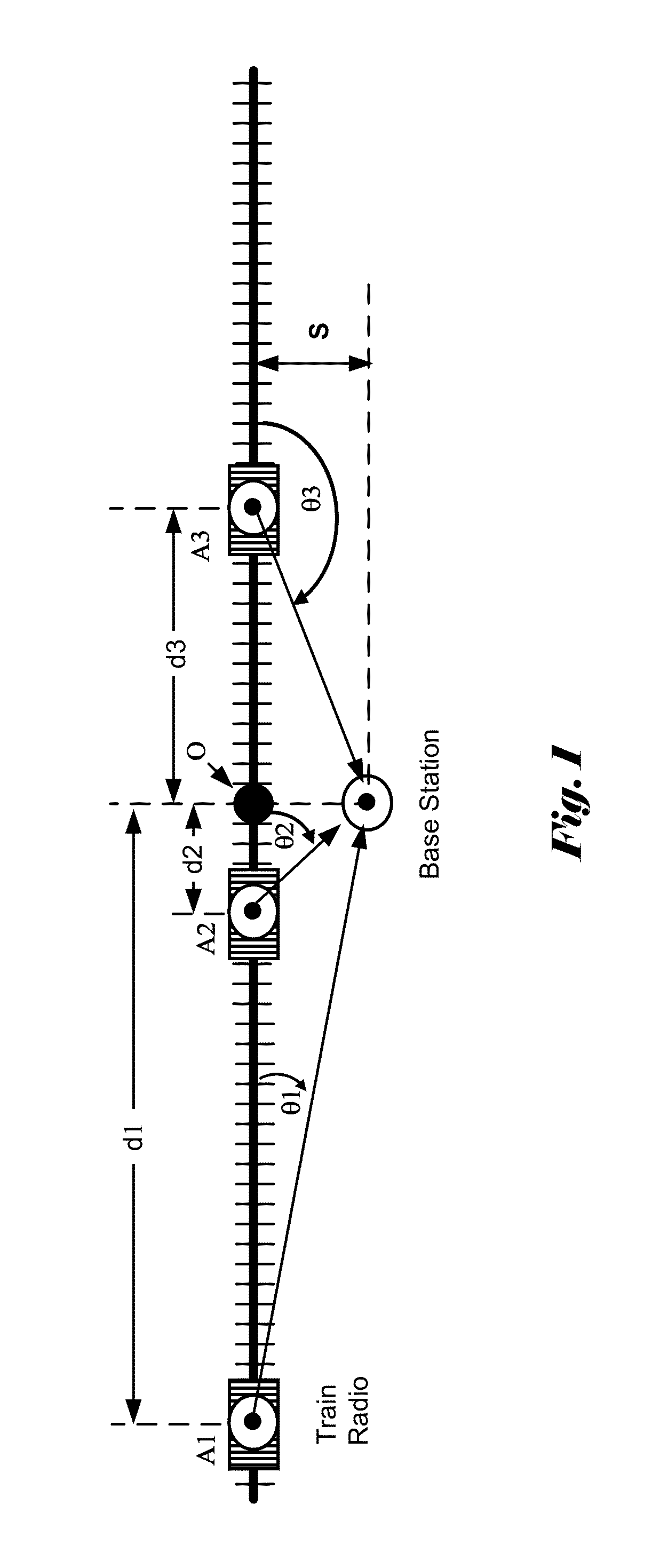Device and method for configurable transmit and receive antennas
a transmit and receive antenna, configurable technology, applied in the direction of independent non-interaction antenna combinations, wireless communication, wireless commuication services, etc., can solve the problems of large block size, serious performance degradation, and difficulty in achieving the effect of zero loss
- Summary
- Abstract
- Description
- Claims
- Application Information
AI Technical Summary
Benefits of technology
Problems solved by technology
Method used
Image
Examples
Embodiment Construction
[0011]In the Positive Train Control system, the fast moving train (e.g., The Acela Express by Amtrak travels at 165 MPH at northeast corridor) poses a great challenge to the system design since the channel characteristics change rapidly when the locomotive passes by the wayside base station, also called track-side base station or base station. FIG. 1 illustrates system configuration with a train radio and a track-side radio. The locomotive is travelling at a speed V and is shown at three difference track locations: A1, A2 and A3. The track-side base station is located at a distance S from the track and the track location corresponding to the base station is marked as O in FIG. 1. The distance between the locomotive and the base station is measured between the respective locomotive location and location O. For locations A1, A2 and A3, the respective distances are d1, d2 and d3 as shown in FIG. 1. The respective distances d1, d2 and d3 are referred to as principal distances in this di...
PUM
 Login to View More
Login to View More Abstract
Description
Claims
Application Information
 Login to View More
Login to View More - R&D
- Intellectual Property
- Life Sciences
- Materials
- Tech Scout
- Unparalleled Data Quality
- Higher Quality Content
- 60% Fewer Hallucinations
Browse by: Latest US Patents, China's latest patents, Technical Efficacy Thesaurus, Application Domain, Technology Topic, Popular Technical Reports.
© 2025 PatSnap. All rights reserved.Legal|Privacy policy|Modern Slavery Act Transparency Statement|Sitemap|About US| Contact US: help@patsnap.com



